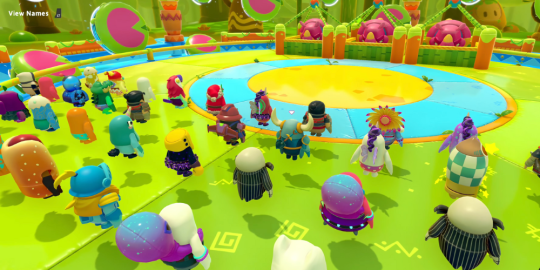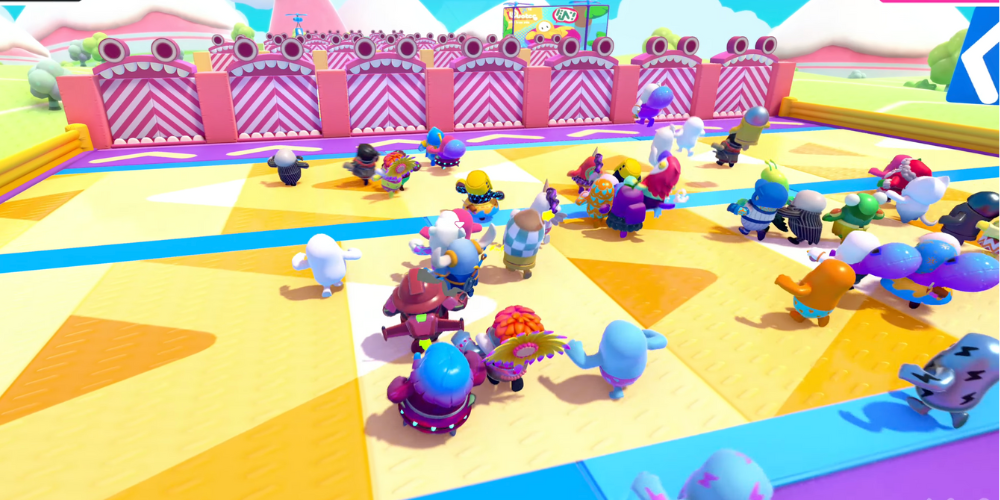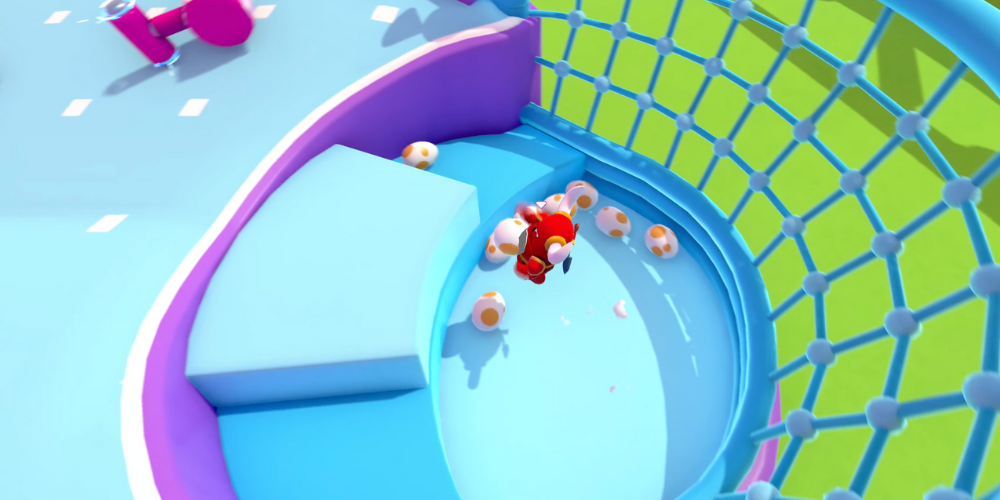
"Fall Guys: Ultimate Knockout" has captivated players around the globe with its zany, colorful obstacle courses and hilariously unpredictable gameplay. Beneath the game's chaotic veneer, however, lies a fascinating application of physics that shapes every jump, bump, and tumble that the plucky contestants experience. This article delves into how principles of physics are integral to the game design and player interaction in Fall Guys, enhancing our appreciation of this delightful melee and shedding light on the unseen intricacies that govern its game-world dynamics.
Gravity: The Pull That Defines Every Fall
At the heart of Fall Guys's engaging gameplay is gravity, a fundamental force that is central to all mechanics. The game employs a simulated gravitational pull that affects how characters leap over obstacles, fall after a miss, and interact with the moving platforms. This is evident in various levels like 'Hex-A-Gone,' where players must rapidly jump from platform to platform, with each section disappearing moments after being touched. The gravitational pull in Fall Guys is slightly exaggerated compared to real life, lending a floatier feel that adds to the game's humorous and unpredictable nature. This tweak allows players more control in mid-air, providing that crucial second for strategic adjustments, which can be the difference between success and elimination.
Physics of Collisions: Impact and Reactions

Collisions play a pivotal role in Fall Guys' gameplay. Each character is a bouncy, tactile being, interacting continuously with other players and obstacles. The game employs a basic physical model for elastic and inelastic collisions, where kinetic energy is transferred in complex ways, depending on the nature of the collision. You can see this in crowded stages like 'Door Dash,' where players must choose and run through one of several doors, some of which are real, and others are fake. The inter-player collisions create a domino effect, showcasing how momentum is conserved and transferred among multiple entities, sometimes leading to chaotic pile-ups that can either hinder or help a player’s progress.
Fluid Dynamics: The Science of Slime Climb
One of Fall Guys' most notorious levels, 'Slime Climb,' involves climbing a tricky obstacle course while avoiding rising slime. Although simplified, the fluid dynamics at this level reflect a rough approximation of how real fluids behave under gravity and against surfaces. The rising slime climbs up the course in a manner akin to how a real liquid might flow upwards against gravity under specific conditions, like in a capillary or a pump system. However, the physics here is adjusted for gameplay purposes to maintain a balance between challenge and fun, speeding up or slowing down based on game progression and player actions.
Friction: The Unseen Hand Guiding Movement

Frictional forces are another crucial aspect of physics observed in Fall Guys. Every surface on which the characters run jump, or fall comes with its own friction coefficient that affects movement. Ice-themed levels like 'Thin Ice' drastically reduce friction, changing how players must control their character. This leads to hilarious yet challenging moments where maintaining control becomes a test of skill and timing. Conversely, levels with greater friction allow for quicker, sharper movements, demonstrating how different surfaces necessitate different strategies and approaches.
Elasticity and Material Physics: Bouncing Toward Victory
In the whimsical world of Fall Guys: Ultimate Knockout, one of the most thrilling experiences is encountering the game's bouncy platforms and obstacles, where elasticity rules supreme. The treatment of elastic properties in the game is intentionally exaggerated, amplifying the fun and adding a layer of unpredictability to each match. This hyperbolic portrayal of elasticity serves both as a gameplay mechanic and as a source of comic relief.

In physics, elasticity describes a material's capacity to withstand changes in shape or size under external stress and revert to its initial form once the stress is no longer applied. In Fall Guys, this principle is creatively applied to various materials within the game environment, particularly in the obstacle designs. For example, in levels like 'Big Fans' or 'Hit Parade,' players interact with large bouncy surfaces that can catapult characters high into the air. The performance of these flexible platforms can be anticipated in terms of their deformation under stress and their ability to release accumulated energy, propelling characters forward or upward.
However, the degree of elasticity varies significantly across different obstacles. Some platforms may have a soft bounce, merely lifting players a small distance, while others could launch characters across significant portions of the level. The unpredictable nature of these interactions often results in hilarious outcomes as players struggle to maintain control over their jellybean-like avatars after being unexpectedly flung.

The exaggerated physics in these bouncy interactions tests players' reflexes and ability to adapt to rapidly changing situations. Characters may bounce off each other when crowded together on a small platform, each collision adding a complex, dynamic layer to the gameplay. This can be particularly noticeable in team-based levels where multiple players may need to coordinate their movements while dealing with the whims of elastic physics, turning straightforward strategies into chaotic fun.
Motion in a Pseudo-3D Space: Depth and Complexity in Gameplay
Although primarily operating in a 3D space, Fall Guys also utilizes 2.5D elements where depth perception plays a crucial role in navigating the environment. This aspect of motion physics adds complexity to the gameplay, requiring precise timing and spatial awareness from players to successfully overcome obstacles and interact appropriately with other dynamic elements of the game. Indeed, mastering these movements can often spell the difference between victory and defeat.
Conclusion: A Dance of Physics in Playful Havoc
Fall Guys: Ultimate Knockout, though seemingly chaotic, is underpinned by various principles of physics, from gravity and collisions to fluid dynamics and friction. These principles are deliberately tweaked to balance realism with fun, creating an engaging, dynamic gaming experience that is as intellectually fascinating as it is wildly entertaining. By understanding the underlying physics at play, players can improve their gameplay, strategize better, and appreciate the clever craftsmanship that goes into such an unconventional video game.